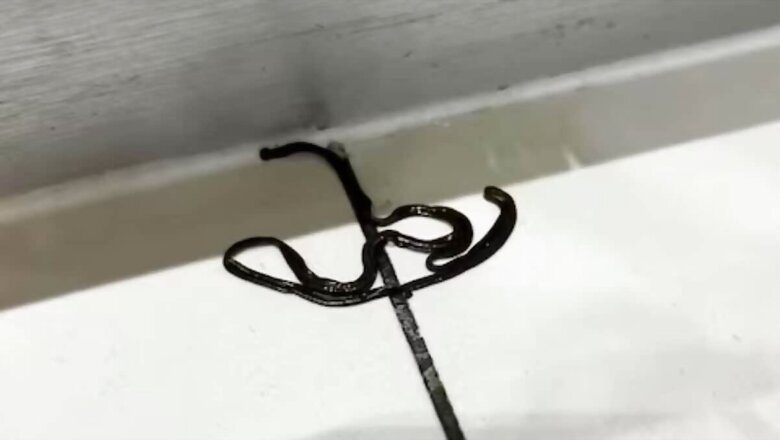
views
Discovering unusual objects in your home can be very unsettling. A woman was frightened when she discovered a black unidentified object in her kitchen. The slimy-looking object worried her, although she initially thought it was a piece of string. Upon closer inspection, she was shocked to see that it looked more like a worm. Taking to social media, she asked others what they thought it was and was horrified when she read the replies. Writing on the Facebook group Mums Who Clean, the Australian woman said: “Anyone got any ideas what on earth this could be? First I thought it was a string, then a black baby banana string.” She continued: “Now I’m worried it’s a worm. I haven’t tried touching it yet.” In the comments, others tried to help the woman and figure out what it could be, reports MailOnline.
Someone suggested that it could be a “slug” if she had a pet that “brought it in with its fur”. Another wrote that it could be a “leech”. Another wrote: “It looks like a wet thread, it won’t hurt if you poke it or touch it with anything”. Another social media user wrote: “If you live in Queensland it could be a slowworm, they’re harmless but they still scare you”. Most concluded that it was a flatworm and assured her there was nothing to worry about.
According to Bug Life, there are a few native flatworm species in the UK, but the most common are rather small (no larger than 3cm) and plain black or grey. One native species, Microplana keenfi, is yellow or pink, but unlike the Australian flatworm, it has a cylindrical body. The Royal Horticultural Society warns that non-native species can be a concern as they “eat earthworms, snails and other soil organisms.” The experts warn that “they can severely reduce populations of some earthworm species and thus affect the soil ecosystem.” They also said: “All non-native flatworms fall under Schedule 9 of the Wildlife and Countryside Act 1981, which states that it is an offence to introduce or release them into the wild.
The Royal Horticultural Society said that when buying a new plant, it is important to check it for flatworms before planting it in the garden, warning: “Flatworms like damp places and often hide at the bottom of plant pots, between the root ball and the inside of the pots.” It urged gardeners to check “under loose turf, plastic or other sheeting, rocks, flat stones and plant containers.”















Comments
0 comment